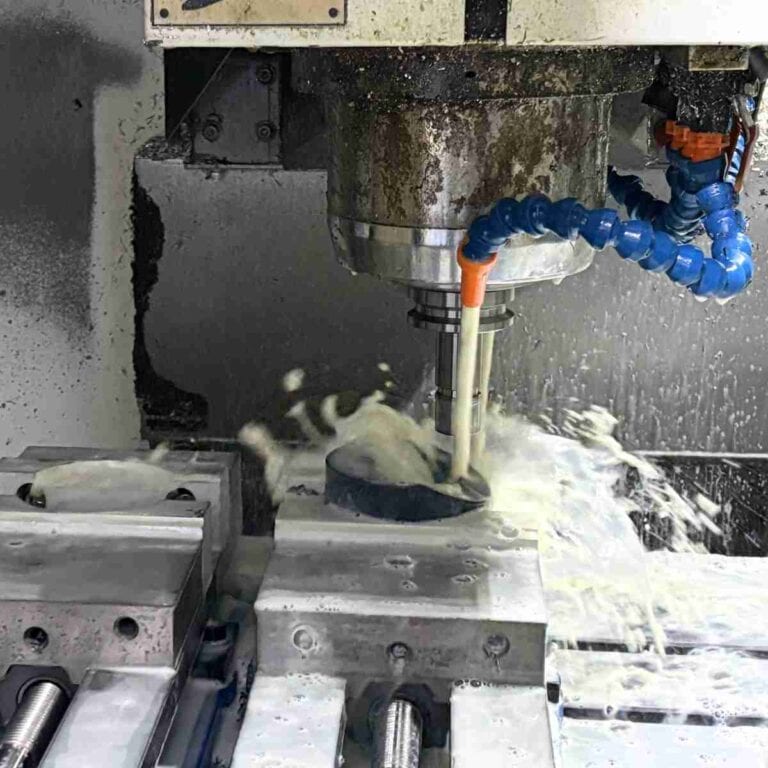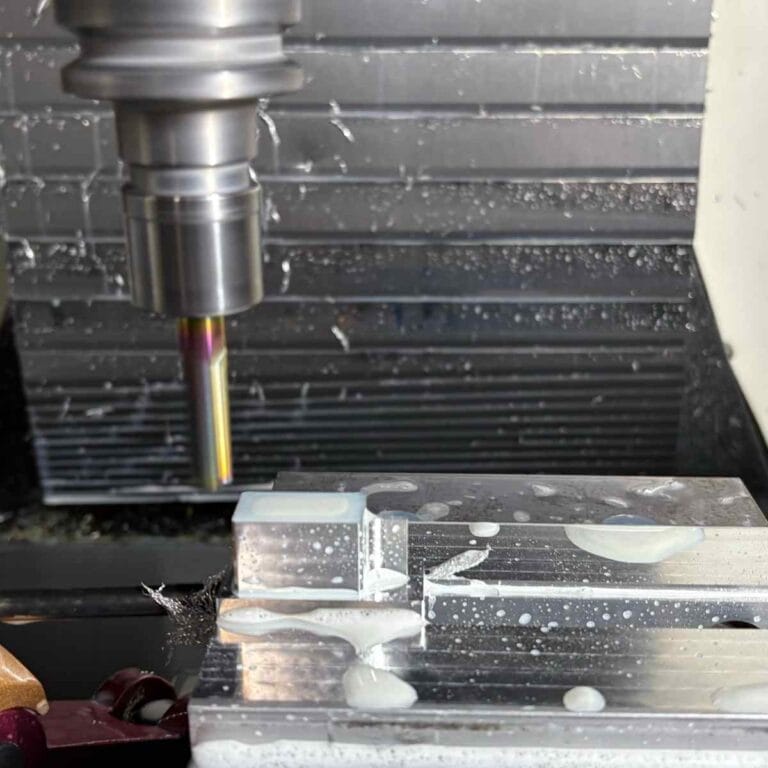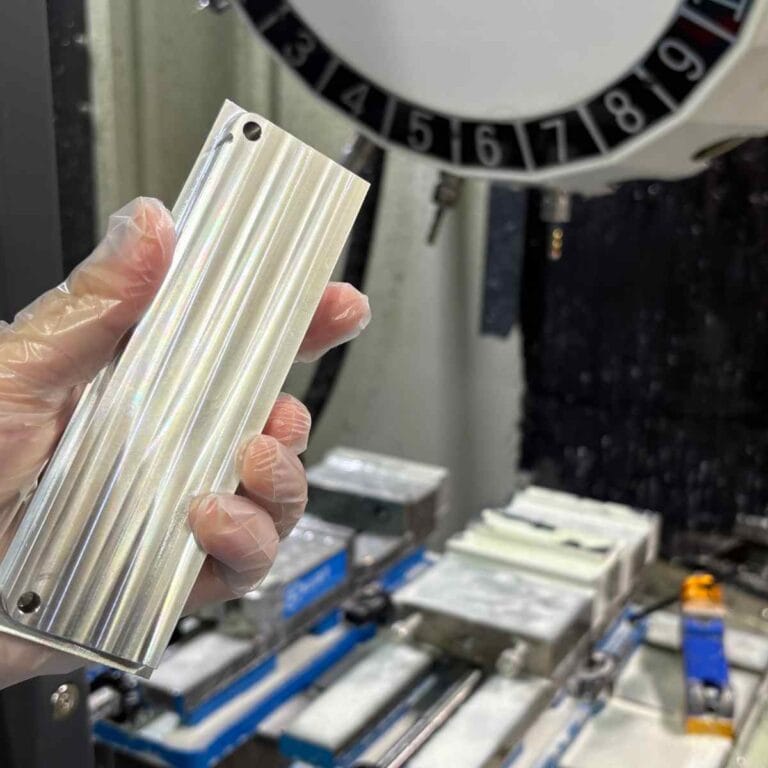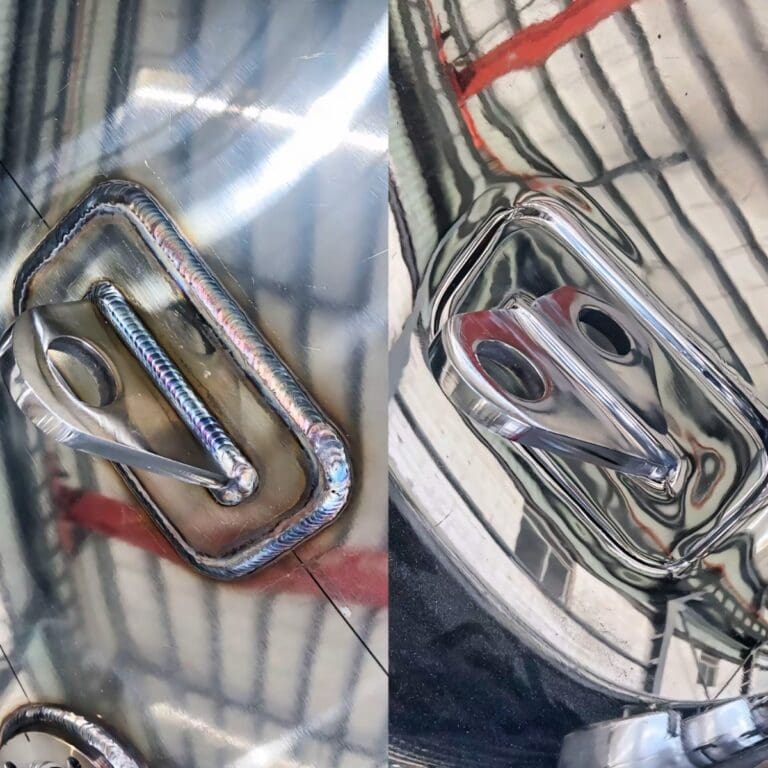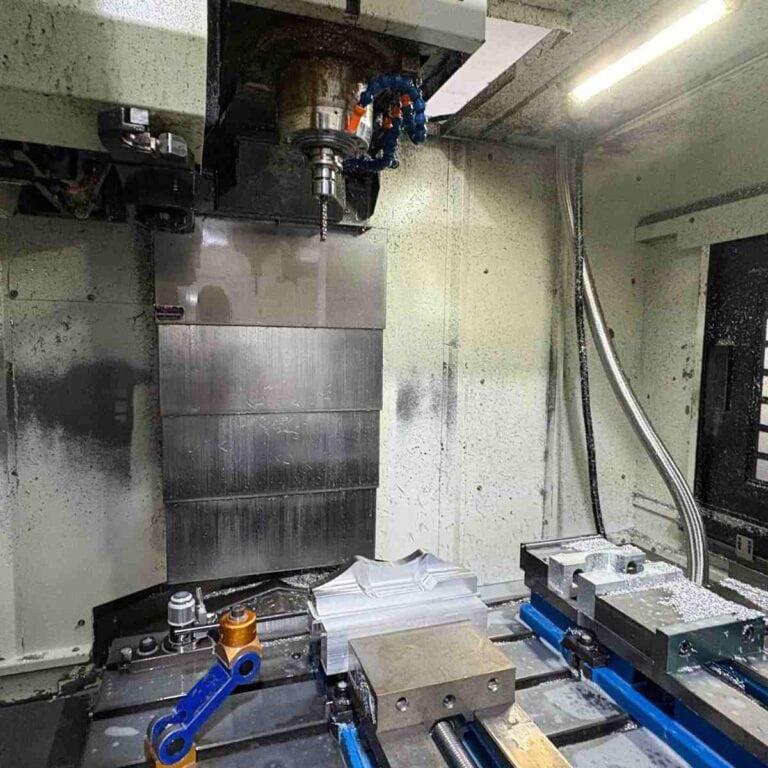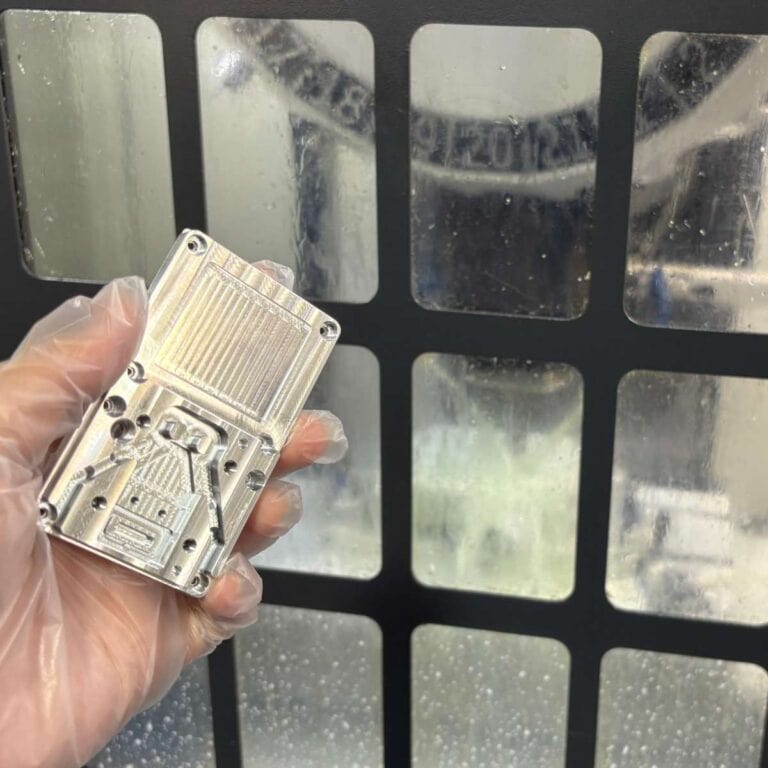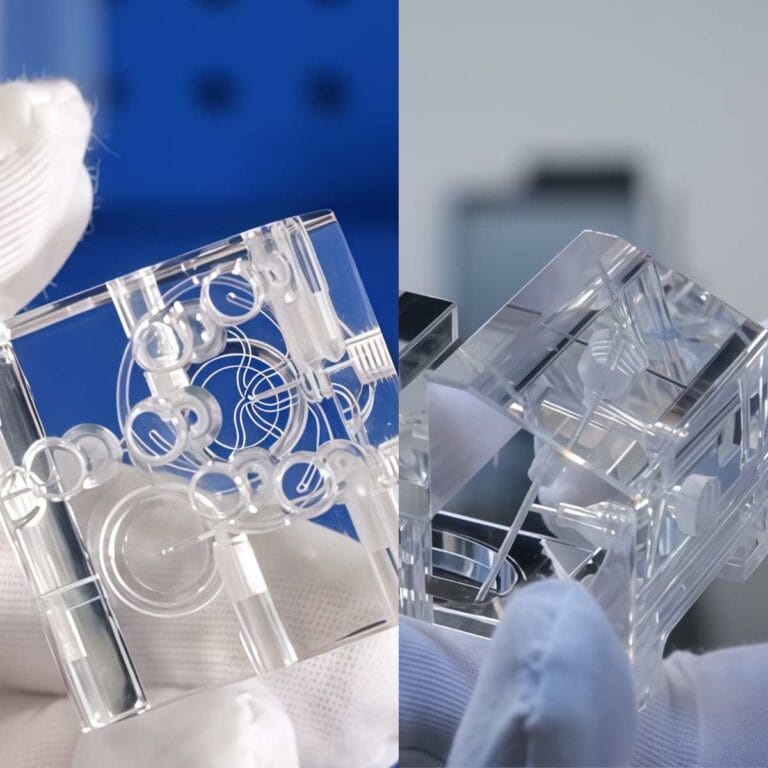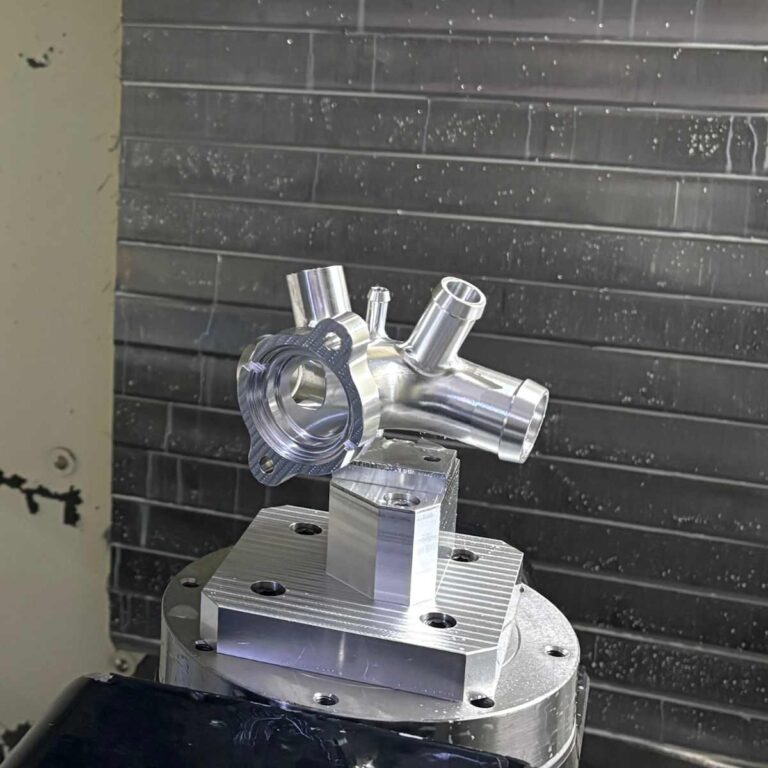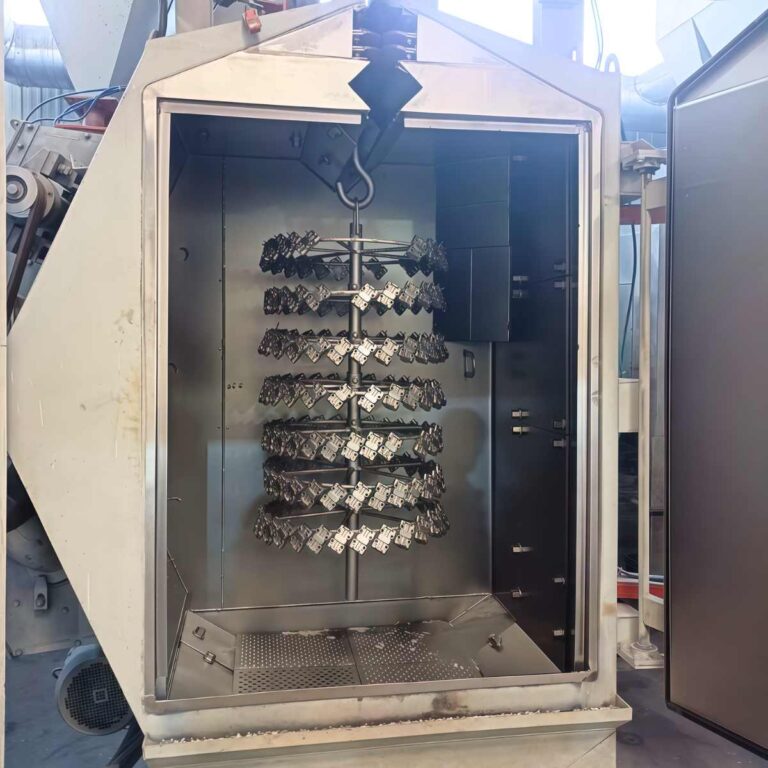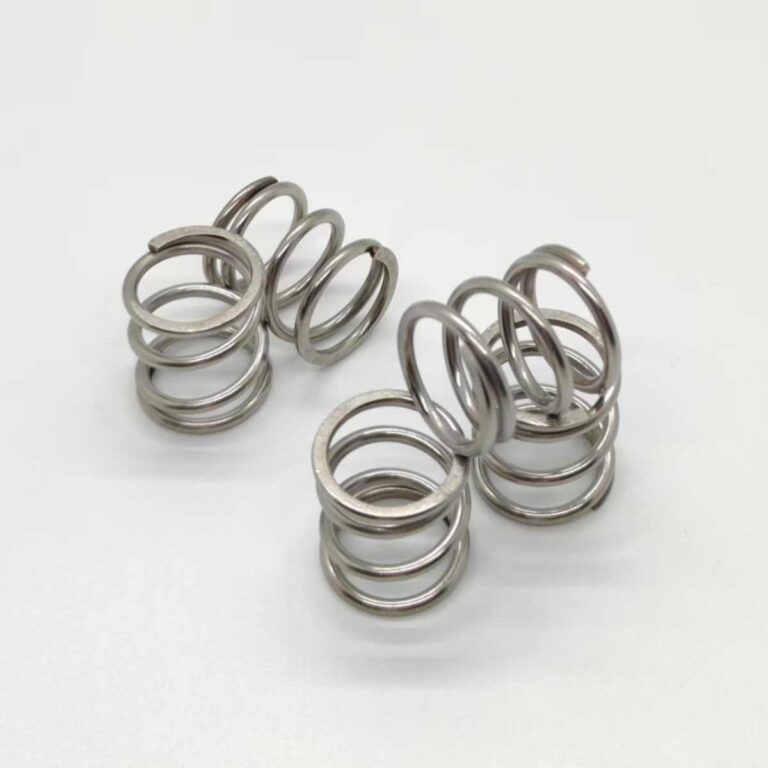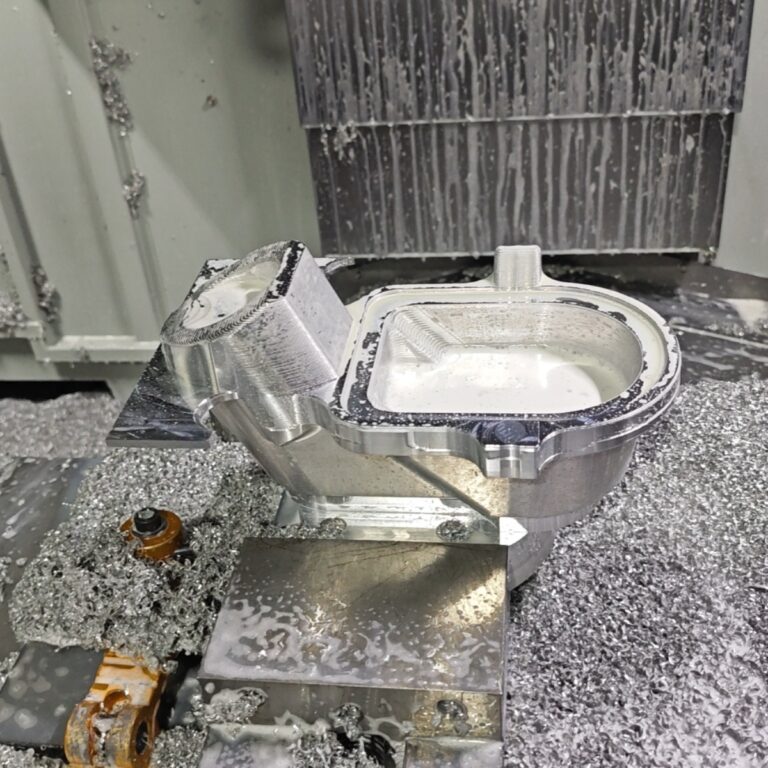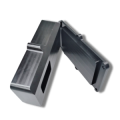Whether to choose PEEK or Delrin depends on your processing goals. If your project requires high heat resistance, excellent chemical stability or biocompatibility, PEEK is more suitable. But if you are more concerned about cost-effectiveness, processing efficiency and dimensional stability at room temperature, Delrin is often a wiser choice. I will help you make the right decision from aspects such as performance comparison, processing behavior, application industry and material selection suggestions.
What Is PEEK
PEEK (Polyetheretherketone) is my material of choice for projects involving high temperatures, high stresses or harsh chemical environments, especially for aerospace, medical implants, petrochemicals and other fields with extremely high performance requirements. It is a semi-crystalline high-performance thermoplastic engineering plastic that combines mechanical strength, thermal stability and excellent chemical inertness.
From the performance data, PEEK’s tensile strength can reach 100-115 MPa, and its flexural modulus is stable at around 3.6 GPa, which is the top level among all thermoplastics. I have tested it in high-precision structural parts, and PEEK can remain stable even under high loads and impacts, without permanent deformation.
In terms of thermal performance, PEEK can be used continuously at 260°C, and can even withstand temperatures of 300°C for a short period of time, with a melting point of up to 343°C. In the engine insulation gaskets I processed for an aviation customer, PEEK was successfully used to replace metal parts, which not only reduced the weight by 40%, but also improved thermal stability and extended the service life by more than 2 times.
It has strong chemical resistance and is almost not corroded by strong acids, strong alkalis and various organic solvents. I have verified in medical projects that it can be reused more than 100 times in a steam sterilization environment (121-134°C) and still maintains complete performance. It is particularly suitable for making reusable surgical tools or implants in the body.
In addition, PEEK has an extremely low moisture absorption rate of only about 0.05%, which gives it extremely high dimensional stability, and can guarantee a tolerance control of ±0.01 mm even in high humidity and high temperature environments. In the field of orthopedic devices and dental implants, I have repeatedly used PEEK to replace traditional titanium metals, providing customers with lighter and more bio-friendly solutions.
Although PEEK has a high material cost (up to $200–$400 per kilogram), its excellent fatigue strength, wear resistance, and ISO 10993 biocompatibility certification make it a strategic material that cannot be easily replaced in many high-risk industries. To me, it is not just “expensive”, but “worth it”.
What Is Delrin
Delrin, also known as POM-H (polyoxymethylene homopolymer), is an engineering plastic that I often use in precision parts processing. It is a semi-crystalline thermoplastic material that combines rigidity and toughness, and is particularly suitable for applications that require high dimensional stability, wear resistance, and low friction.
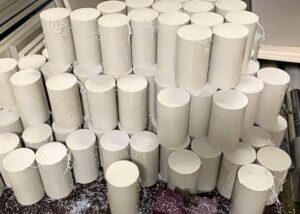
In many years of CNC projects, I often use Delrin to process sliding structural parts, precision fitting components and light load-bearing components. Its tensile strength is usually between 69-80 MPa and its bending modulus is 2.8-3.5 GPa, which is sufficient to meet the structural requirements of most medium-strength applications. Even in long-term operation, it can maintain good deformation control.
Delrin has very low water absorption, typically 0.2%–0.3%, which helps me maintain a tight tolerance of ±0.02 mm in high humidity environments. In addition, it has a melting point of 175°C and has better structural stability than most common plastics over a long-term use temperature range of 90–120°C. Its surface coefficient of friction is between 0.2–0.35, making it ideal for low-friction moving parts such as gears, slides, and pulleys.
Delrin is also one of the “cost-effective” materials I recommend to customers. Its raw material price is much lower than high-performance plastics such as PEEK, and it has high processing efficiency and low tool wear. For example, in a batch of 500 gear projects, I used Delrin to control the unit cost within 8 yuan, while if PEEK was used, the cost would increase by at least 10 times.
Whether it’s automotive fuel system parts, medical device handles, or single-use valve body structures, Delrin can stand out in budget-constrained projects with its excellent comprehensive performance and processing friendliness.
Performance Comparison Analysis
Understanding the performance indicators of Delrin and PEEK will help clarify their most suitable application scenarios. I will combine data, principles and my past experience in CNC machining to conduct an in-depth comparison from multiple dimensions, including mechanical strength, thermal properties, chemical stability, hygroscopicity, friction properties, machinability and environmental protection.
Mechanical Properties
The tensile strength of PEEK ranges from 100–115 MPa and the modulus is about 3.6 GPa , while the tensile strength of Delrin is 69–80 MPa and the modulus is 2.8–3.5 GPa.
PEEK has stronger holding power under high loads. When I designed a petroleum valve core, I tested that it still maintained a deformation of less than 0.01 mm under a pressure of 10 MPa, while Delrin had a deformation of 0.08 mm.
In addition, PEEK has excellent creep performance and is suitable for long-term stress environments, while Delrin is more suitable for mechanical structural parts with periodic medium loads.
Thermal Properties
PEEK can work continuously at 260°C, and can reach 300°C instantly, with a melting point of 343°C . However, the continuous use temperature of Delrin generally does not exceed 90°C, and the extreme short-term temperature resistance is only 120°C.
PEEK has a linear thermal expansion coefficient of only 0.47 x10⁻⁴/°C, and in thermal cycling equipment, the dimensional deviation is much lower than Delrin (about 1.1 x10⁻⁴/°C). In the aviation insulation parts project I processed, the dimensional change of PEEK material after 100 thermal cycles was less than ±0.01 mm, while Delrin reached ±0.05 mm.
Chemical Resistance
Delrin has good resistance to fuels, alcohols and some organic solvents, but it is easily degraded in strong acids or bases. I have tested Delrin parts in alkaline solutions and corrosion spots appeared on the surface after 7 days.
PEEK is resistant to almost all strong acids, strong alkalis, organic solvents and high-temperature steam. After 100 times of autoclaving at 134°C, the surface finish still maintains Ra 0.8 µm. Especially in the medical and chemical industries, PEEK is one of the irreplaceable corrosion-resistant plastics.
Hygroscopicity And Dimensional Stability
Delrin has a moisture absorption rate of 0.2–0.3%, which will cause dimensional expansion in a hot and humid environment, affecting the ±0.02 mm accuracy control. I have found in outdoor connector projects that the Delrin end caps have deformed screw threads after absorbing moisture.
The moisture absorption rate of PEEK is as low as 0.05%. Even under steam, salt spray or water immersion conditions, the dimensional change is within 0.01 mm, making it suitable for hot and humid environments or occasions requiring sealing precision.
Friction Performance And Wear Resistance
Delrin has a coefficient of friction of about 0.2–0.35, and its self-lubricating properties make it very suitable for applications such as sliders and rails. I used Delrin to replace brass sliders in automatic feeding devices, and the friction noise was significantly reduced and the life was increased by 30%.
In addition to having a lower friction coefficient (about 0.1-0.2), PEEK also maintains a smoothness of Ra < 1.0 at 150°C and 0.5 MPa contact pressure, showing high-temperature wear resistance far exceeding that of Delrin. In a chemical pump shaft project, I used PEEK to increase the component replacement cycle from 6 months to 18 months.
Machinability And Tool Wear
Delrin is easy to machine with low cutting resistance. I usually use a cutting speed of 400 m/min and a feed of 0.2 mm/rev, and the tool life can reach more than 600 pieces. The chips are neatly curled and there is no sticking. It is one of the plastics I often use.
PEEK, especially glass fiber reinforced ones, is very wear-prone to tools. I once used ordinary carbide to process CF30 PEEK, and severe chipping occurred after only 15 pieces. It is recommended to use PCD or CVD coated tools, or pre-anneal before finishing to reduce internal stress.
Recyclability And Environmental Attributes
Delrin can be mechanically crushed and recycled, but high-temperature incineration will release formaldehyde (HCHO), which is not environmentally friendly. Despite this, Delrin is still widely used in low-end plastic parts because of its cost-effectiveness.
Although PEEK is costly and energy intensive, it is chemically recyclable, has a long service life, and has a lower overall lifecycle carbon footprint. I used PEEK material in a medical device customer and increased the average service life of the equipment to more than 8 years, reducing replacement costs by 60%.
Key Considerations During Processing
There are significant differences between PEEK and Delrin during CNC machining. The former requires high temperature control and tool optimization, while the latter has high processing efficiency and strong fault tolerance. If you pursue high precision, long tool life and stable surface quality during machining, then Delrin saves time and effort , but if you face extreme requirements such as complex structure, high temperature or biocompatibility, I would choose PEEK.
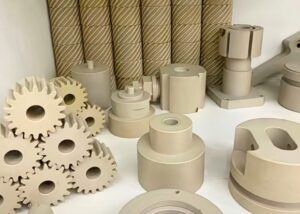
Here are the key points I’ve learned from experience :
CNC Machining Parameters
Delrin processes smoothly and is suitable for high-speed cutting. I usually set the cutting speed to 250–500 m/min and the feed rate to 0.1–0.3 mm/rev. Even with standard carbide tools, it can maintain stable mass production. For example, a customer order of 3,000 Delrin bearing sleeves has a short processing cycle and almost no noticeable tool wear.
PEEK, especially carbon or glass filled grades, is very demanding on tool wear. I recommend reducing cutting speeds to 100–200 m/min, feed rates to 0.05–0.2 mm/rev, and using diamond or ceramic tools first. When machining a batch of PEEK electronic insulator seats, I used compressed air to assist cooling to control edge melting and burrs, which effectively increased tool life by 30%.
Surface Quality And Precision Requirements
Delrin has a clean cutting edge and a smooth surface, with Ra values generally controlled to 0.6–1.2 µm, without the need for special lubricants. I use Delrin on a medical device housing project, and the surface is polished directly to meet customer standards.
PEEK has higher surface quality requirements and is often used in medical, electronic or aerospace devices. In one-time processing of PEEK instrument connectors, the customer required Ra < 0.4 µm, and in actual testing, Ra 0.31 µm was achieved, but it required high-precision tools and pre-annealing treatment.
Precision Tolerance Performance
Delrin has a slightly higher hygroscopicity, but I can generally control it within ±0.02 mm, making it particularly suitable for precision parts in low-heat environments.
PEEK absorbs almost no water and has good thermal stability. I have achieved a stable accuracy of ±0.01 mm in high-end medical guide parts. Through pre-annealing and layer-by-layer fine milling, the error is maintained at ±0.006 mm, which is the first choice for medical or high-end industrial projects.
Post-Processing Compatibility
Delrin is not easy to bond or plate due to its inert surface. I generally use plasma treatment or mechanical bonding, but I still recommend avoiding post-treatments that require high surface adhesion.
The surface treatment of PEEK is more flexible and supports spraying, bonding, plasma activation, etc. In a medical project I participated in, PEEK parts needed to be coated with a hydrophilic layer. After surface treatment, the surface could reach ASTM D3359 4B adhesion level to meet the performance retention requirements after multiple sterilizations.
Applicable Industries And Application Scenarios
Delrin and PEEK have each demonstrated significant advantages in many cross-industry projects I have been involved in. Delrin is suitable for parts that require dimensional stability and economy, while PEEK is the first choice for extreme environments and high performance due to its high temperature resistance, chemical stability and biocompatibility.
The following is a classification summary of typical application scenarios based on my actual processing experience:
| Application Industry | Delrin Common Uses | Common uses of PEEK |
| Medical Industry | Surgical instrument handles, syringe piston rods | Spinal fusion cages, bone screws, surgical retractors |
| Aerospace | Lightweight equipment housing | High temperature structural supports, electrical insulation fixings |
| Automotive Industry | Gears, fuel caps, bushings | Engine gaskets, turbine insulation structures |
| Electronics Industry | Cable ties, switch elements | High voltage insulators, connector pins |
| Industrial Equipment | Conveyor rollers, guide rails, housings | High-pressure pump parts, corrosion-resistant valve seats |
Cost And Purchasing Feasibility
When evaluating whether a material is suitable for a project, I never just look at the unit price, but consider its “full life cycle cost” comprehensively, including raw material price, processing efficiency, tool wear, and global supply feasibility. Although Delrin is cheap and has a fast processing speed, its application range is limited . Although PEEK is expensive, it can maintain stability in extreme environments and has advantages from the perspective of long-term performance returns.
The following are several core comparison dimensions I have compiled based on actual experience:
Material Unit Price Difference
Delrin’s market price is relatively stable, usually in the range of $5–15/kg, making it suitable for cost-sensitive projects or high-volume production scenarios.
The price of PEEK varies greatly depending on the brand and purity. Industrial grade is about $90/kg, while medical grade or enhanced materials may be as high as $400/kg.
Processing Cost And Material Loss Rate
Delrin has high processing efficiency, smooth cutting, low tool wear, is suitable for high-beat production , and has a low loss rate.
PEEK is a high-strength material that is easy to wear the tool. Especially PEEK with added carbon fiber or glass fiber requires diamond tools, and the cutting speed is slow, the output efficiency is relatively low, and the cost of processing a single piece is high.
Supply Chain And Availability Analysis
Delrin has ample inventory worldwide, with regular stock available in sheets, round bars, rods and other forms, enabling quick response to urgent orders.
PEEK, especially special grades used in the medical or aerospace fields (such as PEEK Optima, PEEK CA30, etc.), usually requires a delivery cycle of 2-6 weeks, and some grades even need to be customized and imported.
How To Choose The Right Material
When I provide material selection advice to customers, I always follow the principle of “performance first, cost adaptation”. Although Delrin and PEEK are both excellent engineering plastics, they serve completely different application levels. If the project involves extreme working conditions, medical standards or long-life design, PEEK is irreplaceable. In daily industrial scenarios, Delrin can also achieve stable output with its high cost performance and easy processing.
How To Balance Performance Requirements With Budget Constraints
When a customer’s product needs to withstand high temperatures (>200°C), strong acid and alkali corrosion, or repeated high-temperature sterilization, I will directly recommend PEEK. Its performance can support demanding applications for a long time. Although the initial cost is high, the life cycle is longer.
If it is a common mechanical structure or transmission part that does not involve special environments, I prefer to recommend using Delrin. It is affordable, efficient to process, suitable for mass production, and is an ideal material for medium and low strength scenarios.
In Which Scenarios Can Delrin Be Used?
Delrin is fully capable of common sliding parts, such as syringe piston rods, plastic gears, and small and medium-sized connectors for household appliances. These working conditions do not require high temperature and chemical environments.
In automotive interior parts (such as fuel caps, bearing sliders) and 3C product structural parts, Delrin has excellent dimensional stability and low water absorption, making it the most cost-effective metal alternative.
Which Projects Must Use PEEK?
Implantable devices in medical devices (such as bone screws, spinal stents) or surgical tools that require repeated steam sterilization must use biocompatible and high-temperature resistant PEEK.
In the aerospace, petrochemical, semiconductor and other industries, parts often need to withstand high temperature, high pressure, strong acid and alkali environment for a long time. At this time, I only recommend the use of PEEK, whose thermal stability and chemical resistance are enough to cope with harsh tasks.
FAQs
Is Delrin The Same As PEEK?
No, Delrin and PEEK are very different. Delrin is an acetal homopolymer with moderate strength and low friction, while PEEK is a high-performance thermoplastic offering superior chemical resistance, heat tolerance up to 260°C, and biocompatibility—commonly used in aerospace and medical applications.
What Plastic Is Stronger Than Delrin?
PEEK is significantly stronger than Delrin. PEEK has a tensile strength of 100–115 MPa, while Delrin ranges from 69–80 MPa. In my machining projects, PEEK consistently outperforms Delrin in high-load, high-temperature environments.
What Is The Difference Between Acetal And PEEK?
Acetal, like Delrin, is cost-effective and easy to machine but has lower heat and chemical resistance. PEEK, on the other hand, can withstand 260°C, has excellent wear and fatigue resistance, and is preferred in critical or sterile environments.
What Is A Good Substitute For Delrin?
For lower-performance needs, I sometimes use Nylon or UHMW-PE. For parts requiring stiffness and low friction but lower cost, Acetal Copolymer is common. If higher performance is needed, PET or even PPS can replace Delrin depending on the application.
What Is The Material Equivalent Of Delrin?
Delrin is equivalent to Acetal Copolymers like Celcon. Both are POM-based materials with similar strength, stiffness, and machinability. However, Delrin (homopolymer) offers slightly better mechanical properties, while copolymers have improved chemical resistance.
What Is The Temperature Range Of PEEK?
PEEK operates reliably between -50°C and 260°C continuously. Its melting point is 343°C. I’ve used PEEK parts in environments like steam sterilization and chemical baths without dimensional degradation or performance loss.
Why Is PEEK So Expensive?
PEEK’s price, ranging from $90 to $400/kg, reflects its complex synthesis, purity standards, and extreme performance. It replaces metal in critical aerospace and medical parts, offering resistance to heat, chemicals, and fatigue with long service life.
How Durable Is PEEK?
PEEK is one of the most durable plastics I’ve used. It resists creep, fatigue, radiation, and chemicals even under thermal stress. In medical and industrial use, PEEK components last 5–10 times longer than standard plastics like Delrin.
Conclusion
If cost is a priority and the application environment is not harsh, Delrin provides excellent processability and strength , while if faced with high temperature, strong corrosion or medical compliance requirements, PEEK is a more strategic choice. Years of practice have taught me that Delrin focuses on efficiency and PEEK pursues performance limits.

